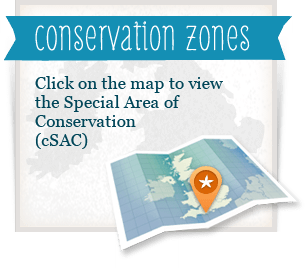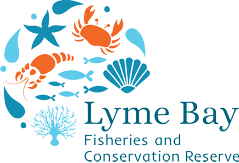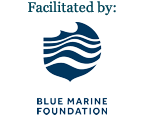
Management of Reserve
Following the establishment of the Lyme Bay Fisheries and Conservation Reserve a Working Group was set up in 2011. The Working Group agreed a Memorandum of Understanding with the purpose: "to develop, promote and implement best practice in fishery and conservation management within the Lyme Bay Fisheries & Conservation Reserve in order to protect important habitats and features and maximise socioeconomic benefits for local coastal communities."
The Working Group was formalised in 2013 as the Lyme Bay Fisheries and Conservation Reserve (LBFCR) Consultative Committee with a Terms of Reference that set out the governance structure and ways of working. More information about the Committee can be found here.
The MoU that underpins the work of the Committee includes the following principles:
- The socio-economic and cultural importance of the fisheries within the area should be acknowledged and be central to fishery and conservation management which will aim to maximise the socio-economic benefit to local communities and secure their long term sustainability
- Protected habitats and species will be afforded appropriate protection from disturbance and damage. We recognise that a diverse and healthy marine environment is of paramount importance and that the habitats and communities within the Lyme Bay Fisheries & Conservation Reserve, including the SAC, should be managed to secure their long-term protection.
- Best possible fishery management practices will be developed, promoted and adopted to secure the long-term viability of target species populations
In 2012, the Committee commissioned work to pull together evidence on the sustainability of fishing activity in the area, to review current management practice and to propose future management options as part of an Integrated Fisheries Management Plan published in 2014.
The Lyme Bay Reserve spans two IFCA districts: i) the Southern IFCA extends from the east up to Lyme Regis; and ii) the Devon and Severn IFCA extends from Lyme Regis to the west. Both IFCAs introduce and enforce specific Byelaws and other measures to manage fish stocks and marine ecosystems within their district. These legally binding measures apply to fishermen operating within and outside the Lyme Bay Reserve including minimum landing sizes for key species, vessel size restrictions and both have a Byelaw banning the use of bottom towed gear inside the Reserve.
To achieve the principles set out in the Memorandum of Understanding and deliver best practice fisheries and conservation management the Committee agreed that further measures were needed within the Reserve.
Voluntary Codes of Conduct
In 2012 the Lyme Bay Fisheries and Conservation Reserve Consultative Committee assessed the measures that might improve the management of the area. From an early point in the discussions, the difficulty of doing anything quickly to improve the management of the area under the statutory route was identified. A byelaw for example, can take up to two years, including public consultation and with the Reserve spanning two separate fisheries authority districts, measures would have to be introduced through two separate processes. The Committee therefore agreed that the best approach was to start with voluntary measures.
The first Voluntary Code of Conduct for Commercial Fisheries was agreed by the Lyme Bay Reserve Committee in 2012, committing fishermen to engage with managers and scientists to improve knowledge and understanding of fisheries and wildlife and to respect experimental and monitoring areas within the Reserve. The Code has since been adapted to reflect research and knowledge on the sustainable levels of fishing and practices that are compatible with the Reserve, with the addition of:
- A limit of 250 crab or lobster pots per vessel with no more than 10 pots in each string
- A limit of 500 whelk pots per vessel with no more than 30 in each string
- A limit of 4,000 yards total net length with a mesh size of less than 7.5 inches
- A limit of 8,000 yards total net length with a mesh size greater than 7.5 inches
Adherence to the Code is a requirement for any fishermen who wish to participate in the Reserve Seafood marketing scheme.
A Voluntary Code of Conduct for Recreational Sea Anglers was agreed in 2014 and is promoted, with support from the Angling Trust, to fishing clubs and tackle shops.
The Codes of Conduct can be found in full in the Download Centre.




















